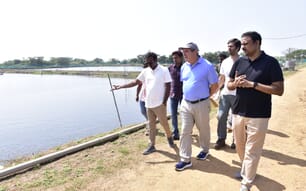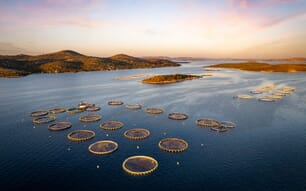“We have warned farmers, except those who have stored low-saline water, not to breed a new shrimp crop until the beginning of the rainy season,” said Pham Hoang Son, head of the Bac Lieu province’s Aquaculture Sub-department.
Saline intrusion has entered up to 70km deep inland on rivers in many areas in the delta, reports VietNamBridge.
In most provinces that breed brackish water shrimp, farmers have reduced the cultivation areas by 50 per cent because of high salinity, according to the Ministry of Agriculture and Rural Development’s (MARD) Aquaculture Department.
In Soc Trang, Ca Mau, Bac Lieu and Kien Giang provinces, salinity has exceeded 30 gram per litre. When the salinity is above 30 gram per litre, shrimp are easily affected by disease.
Le Van Su, director of the Ca Mau Province Department of Agriculture and Rural Development, said hot weather had affected not only industrial and semi-industrial shrimp farming areas but also extensive shrimp farming areas.
In Ca Mau Province, which has the country’s largest shrimp cultivation area, extensive shrimp farming areas focused mostly in Dam Doi, Phu Tan and Tran Van Thoi districts.
More than 2,678 ha of extensive shrimp farming areas in Ca Mau had been affected by disease with a damage of 30-70 per cent so far this year, up 1,864 ha against the same period last year.
Solutions
The MARD’s Animal Health Department has told provinces to increase environmental surveillance to promptly warn farmers about major changes in salinity and other environmental factors.
Provinces should instruct farmers about safe breeding techniques, focusing on factors that cause disease like salinity, temperature and water depth in ponds, said the Animal Health Department.
Farmers should follow relevant agencies’ warnings and schedules when breeding shrimp, it said.
Speaking at a seminar held in HCM City last week, Tran Dinh Luan, deputy director of the Soc Trang Province Department of Agriculture and Rural Development, said officials of the crop cultivation sector had distributed leaflets to farmers about safe production during saline intrusion. He said officials of the crop cultivation sector should also do this.
"Farmers need to be introduced to a successful aquaculture model and methods to reduce production costs and pollution," he said.
Though hot weather occurred last month, many shrimp farmers in Soc Trang’s Tran De District had a good harvest because they had large ponds, and had stored low saline water since the end of last year.
They had also bred shrimp at an average density of 30-50 shrimp per square metre, according to the My Thanh Shrimp Association in Tran De District.
In areas with high salinity, farmers should rotate aquaculture species, Luan said.
For instance, in Soc Trang’s high salinity areas, farmers were breeding yellow pomfrets in the dry season and breeding shrimp in the rainy season, he said.
Vu Van Tam, MARD Deputy Minister, has required that MARD’s Animal Health Department set up a national programme to prevent and control diseases on brackish water shrimp, considered to be one of Vietnam’s most important aquaculture species.
The country exports about US$3 billion of brackish water shrimp a year.
The delta’s natural conditions are suitable for breeding this kind of shrimp, accounting for 80 per cent of the country’s brackish water shrimp output.



